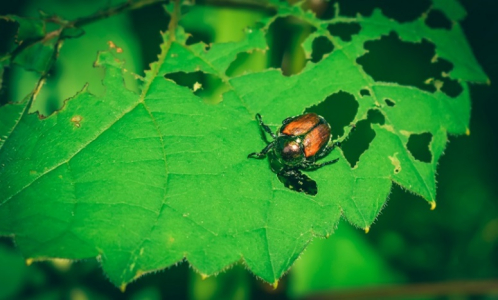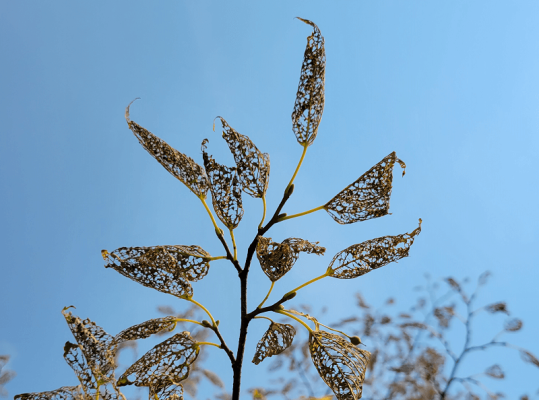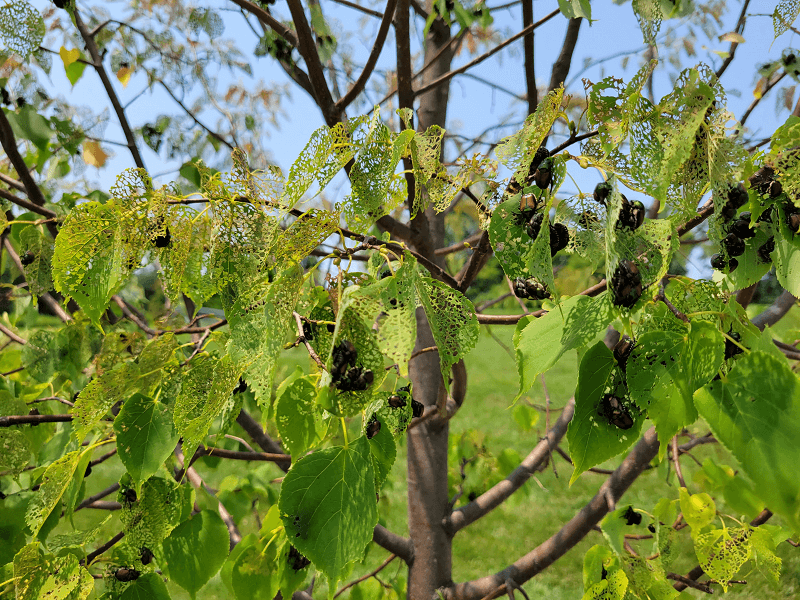What You Need to Know About Japanese Beetles
As part of our ongoing series on invasive insects, this article focuses on Japanese beetles, a significant concern for homeowners and gardeners due to their destructive impact on over 300 species of ornamental plants. This article will discuss the characteristics, life cycle, and damage caused by Japanese beetles in Pennsylvania. We will also explore various control methods and offer tips for preventing infestations.
How Japanese Beetles Came to Pennsylvania
Japanese beetles (Popillia japonica) are invasive insects native to Japan, as the name implies. The Japanese beetle was introduced into the U.S. in 1916 near Riverton, New Jersey, and likely arrived in the United States on ornamental nursery stock. The pest soon spread throughout the eastern United States, being detected on the west coast as early as the 1940s. Since then, the pest has spread throughout much of North America, affecting most states and Canada.
Japanese Beetle Appearance
Adult Japanese beetles are about one-half of an inch long with a shiny metallic green body and copper-colored wing covers, and their neck, head, and legs are reddish-brown. The adult beetles also have two patches of white hairs at the tip of their abdomen and five tufts of white hairs on both sides of their abdomen. In addition, adult beetles often have orange wing tips, which show when they are flying to escape predators or when disturbed. The larvae, or grubs, are creamy-white with brown heads and three pairs of legs on the thorax region (where the wings and legs attach to the main body).


Japanese Beetle Damage
Beetle Life Cycle
The beetle’s life cycle is completed in approximately one year in Pennsylvania. Female beetles lay eggs in the soil under host plants in late June through mid-August. Then, the beetle larvae will hatch after two weeks and feed on grass roots until winter. Japanese beetles spend the winter buried in the ground, moving towards the surface as the spring season approaches and the weather gets warm. During this time, the larvae will continue to feed on grass roots until they mature, usually from late May through June.
From late June to July (around June 20 in the southern areas of Pennsylvania), the larvae will have matured into adult beetles and emerge from the ground. While Japanese beetles begin emerging from the soil around late June, the pests are most abundant during July. When mating, female beetles lay around 40-60 eggs in the soil, where the life cycle repeats.
As mentioned previously, the beetles feed on more than 300 species of host plants, from ornamental plants to even fruit and crops. The larvae only feed on grass roots, while the adult beetles feed on a much more extensive range of plants. Some common ornamental plants the pest feeds on include roses, flowering cherries, marigolds, and birch—adult beetles damage plants by “skeletonizing” the foliage. “Skeletonizing” means that the beetles consume only the leaf material between the veins. As a result, these leaves may turn brown and eventually fall off.
Adults feed during the day and tend to favor hot weather and plants growing with total exposure to the sun. The larvae, meanwhile, damage lawns by chewing grass roots, causing the turf to brown and die. The result is that the turf pulls up easily from the soil, or dead patches of grass form if the problem is severe.
Japanese Beetle Treatment & Management
Our plant health care specialists have a specific treatment program for managing the beetles and protecting your plants. For example, one pest management treatment method for Japanese beetle populations in a landscape is pesticide application.
Methods for controlling and eliminating Japanese beetles include:
- Biological approaches: Introducing natural predators, such as parasitic wasps or flies, can help control beetle populations.
- Chemical approaches: Pesticide applications by plant health care specialists can manage beetle infestations and protect plants.
- Cultural approaches: Removing rotting tree fruit and maintaining a healthy lawn can help prevent beetle infestations.
Traps are also available, but the trapping method is used more as a monitoring tool to measure the extent of pest presence of the pest. Traps use floral lures or female pheromones to attract beetles, so the traps could attract more beetles to your landscape. Like the pesticides, these traps should be handled by a professional plant health care specialist to ensure that they are used correctly.

Contact Burkholder PHC for Japanese Beetle Treatment in Your Landscape
Japanese beetles can be a significant issue for homeowners, as the beetles negatively affect the appearance and health of their plants and lawn. If you have plants that show signs of the pest’s activity or want to keep your landscape safe from them, reach out to Burkholder PHC. Our team will conduct a plant health care evaluation and diagnosis of your landscape and inform you of your treatment options. We provide no-cost identification of the situation in addition to free testing, diagnostics, inspections, and evaluations. Contact us today for a free consultation.

